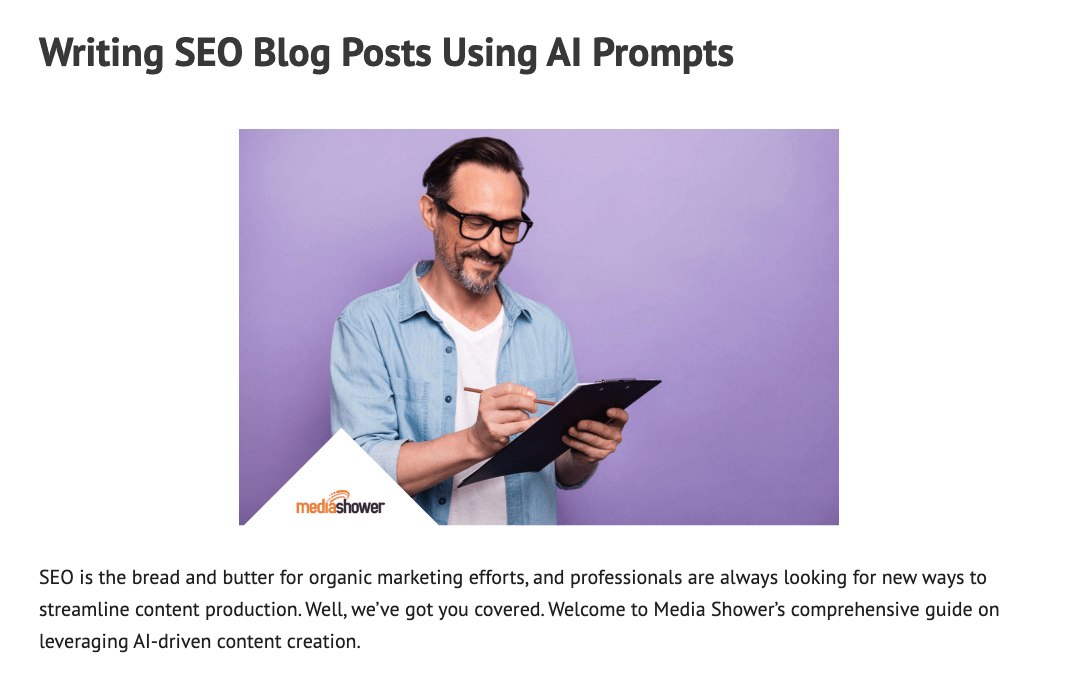
Most marketers treat their content as “one and done.” They post it online, and move on to the next thing.
We’ve learned you can get much more mileage out of your content if you think about continuously optimizing your best performers.
We know this from experience: we’ve worked with over 500 clients to develop 100,000 pieces of content, and consistently our best-performing content are the posts and pages that we continually work to optimize.
In this guide, we’re revealing how we deliver such incredible results for our clients: continuously optimizing content, even after it’s been published. Here’s our secret sauce.
What Is Content Optimization?
Content optimization is an ongoing process of continually making your content better. Even when you publish your best effort, you don’t know how it will land with your target audience until the content goes live and starts getting “customer feedback” – in the form of bounce rate, time on site, and SEO rankings.
We find our best performers, then refine and adjust the content — text, visuals, or structure — to improve it, based on what seems to be working.
Optimization isn’t just an exercise to keep busy.
- According to Orbit Media, blogs can experience a nearly 3x increase in performance from refreshed blog posts regularly.
- Likewise, a survey from Semrush notes that 93% of surveyed marketers state that regularly updating content leads to effective campaigns.
- According to a survey from Referral Rock, 67% of respondents claimed that updated or repurposed content was the best-generated lead. In comparison, a full 98% stated that these approaches were the most cost-effective marketing tactic.
There’s another benefit to optimizing content: by republishing with a more recent date, it signals to Google (and your readers) that it’s fresh. Freshness is a factor.
A Note on Content vs. SEO Optimization
Most people see SEO as something you do before the content is published. While we want to make our pisces as SEO-friendly as we can from the get-go, the real SEO gains come after publishing, as we see which keywords we’re ranking on, and optimize our content around that.
Optimizing Specific Types of Content
Each piece of marketing content requires a unique optimization approach, but there are basic principles that apply to each type.
- Blogs: Update outdated information and statistics. Improve SEO by revising keywords and meta descriptions. Enhance readability with new formatting or visuals, and restructure content with tables of contents and internal links. Update the publish date!
- Whitepapers: Incorporate recent research or case studies. Update any references to align with current industry standards. Refresh the design for a more modern look. Derive different forms of content (infographics, social media posts) to refresh advertising efforts).
- Ebooks: Revise content to reflect the latest trends and data. Enhance interactivity with embedded links or multimedia. Update the cover and layout for a fresh appearance. Derive different forms of content (infographics, social media posts) to re-promote it across social media..
- Social Media Posts: Revisit and update successful posts with current data or trends. Refresh visuals or graphics to maintain engagement. Modify hashtags to align with current trending topics.
- Infographics: Update data points and statistics to keep them current. Redesign with new color schemes or layouts. Update the publish date!
Best Practices for Content Optimization Strategies

Here are some of the tactics that we use when optimizing a specific piece of content for a client..
- Include Current Topics and Trends: Old content may get a spritz by just working in new topics that are top of mind. Industry trends are always popular, especially around the start of the new year.
- Bolster Top-Performing Content: Conversely, if you have content that performs well, you might consider putting it on a regular optimization schedule. (Update annually for trends, monthly for pricing updates, etc.)
- Thin Out Unnecessary Content: There’s a saying in fiction writing: Don’t be afraid to kill your babies. The same is true in marketing–if it isn’t performing or getting Google love, it’s OK to unpublish it. (Your SEO rankings may benefit.)
- Incorporate Visuals and Multimedia: Enhance text with relevant images, videos, infographics, and interactive media. A good YouTube video is free to add, and it can increase time on page and boost SEO rankings.
- Repurposing Content: Old content can become new again when you spin it off into other forms of content. Gary Vee is an expert in this, promoting the idea that each piece of content is actually several.
- Refreshing for SEO: SEO keywords change over time, but older content can follow suit by long-tail keyword targeting and refreshing structure for linking and navigability. Adding FAQs specific to your page topic is one easy way of working in long-tail keywords.
- Leveraging Data Analytics: Data is always good, and data viz is even better. Expand your content with charts, graphs, and other visualizations to make it scannable and skimmable for your audience.
How Often Should You Update Content?
There isn’t a one-size-fits-all strategy for content optimization. But, there are a few guidelines:
- Annual content works well for thought leadership. For example, the “Annual Guide to X” or the “Y Report for 2024” can make a piece of regularly updated content very attractive from a thought leadership perspective.
- Weekly updates work well for content that includes rapidly changing data. Our sister site, Bitcoin Market Journal, regularly publishes weekly updates and articles on rates and fees for different cryptocurrency and DeFi investments.
- Quarterly or biannual updates are great for top-performing content that draws significant traffic, mainly if that content revolves around reviews, industry assessments, or product lists (“The Top Ten X for Busy Marketers,” for example).
Case Study: Our Content Optimization at Media Shower
Not only do we recommend content optimization to our clients, we do it ourselves. One of our most significant projects is our push into generative AI, specifically through our series of dedicated landing pages.
AI Landing Pages and Optimizing For User Experiences
Initially, we started producing informative articles to help busy marketers use AI (usually something like ChatGPT) to build out essential documents or blueprints for their work. For example, we might publish an article on marketing plan templates that included prompts we tested and knew would produce good results.
There was a bit of urgency with our publishing schedule in that we wanted to get good and helpful content in front of our audience. However, we were OK with this urgency because we knew these would evolve.
The first versions of these pages were relatively short, and they would include some basic information:
- A set-up prompt that would allow the reader to use ChatGPT (even the free version) to build a marketing profile for their business or brand.
- A series of questions that, when the user answers them, helps the AI build out a template for a given piece of content.

This core was put into a basic article format so the reader could find it, copy and paste the prompts, and follow the instructions.
As time went on, however, there was more to the topic than that. Even as pages started getting search traffic, we wanted to expand them. So, we switched gears in our production process, adding some additional sections:
- The reader could use a series of additional prompts to refine the results they received.
- A list of best practices to help them further develop the output of the AI.
- A set of FAQs to help position the article as a go-to resource on that topic.

This involved changing how we created new content and strategically moving back through older content to expand what we had (if we felt the article warranted that attention).
Now, the articles weren’t just a contextless prompt but a tool our audience could use to create a document or template and make something more with it.
We saw a lot of success with this approach… but wanted to take these articles to the next level. This involved adding interactivity to draw in the reader and involve them in a process without leaving the site. This is where our AI chatbots came into being.
In this round of optimization, we added two key features:
- Our AI chatbot interface.
- Several examples of document templates are produced from prompts used by the chatbot.

Over time, these articles have evolved into something much different than they started, and as such, we’ve seen significant boosts in conversions and search placement–we feature these extensively in our Media Shower Newsletter. We have thousands of new keyword rankings, including the first page of Google.
Media Shower: Making Content Better
Like software development, content optimization is an ongoing cycle of development, release, and maintenance. This process, however, can be extremely rewarding because it keeps your content driving ever-better marketing results.
Are you looking to develop content you can keep making better? Try working with the experts at Media Shower with a free demo.